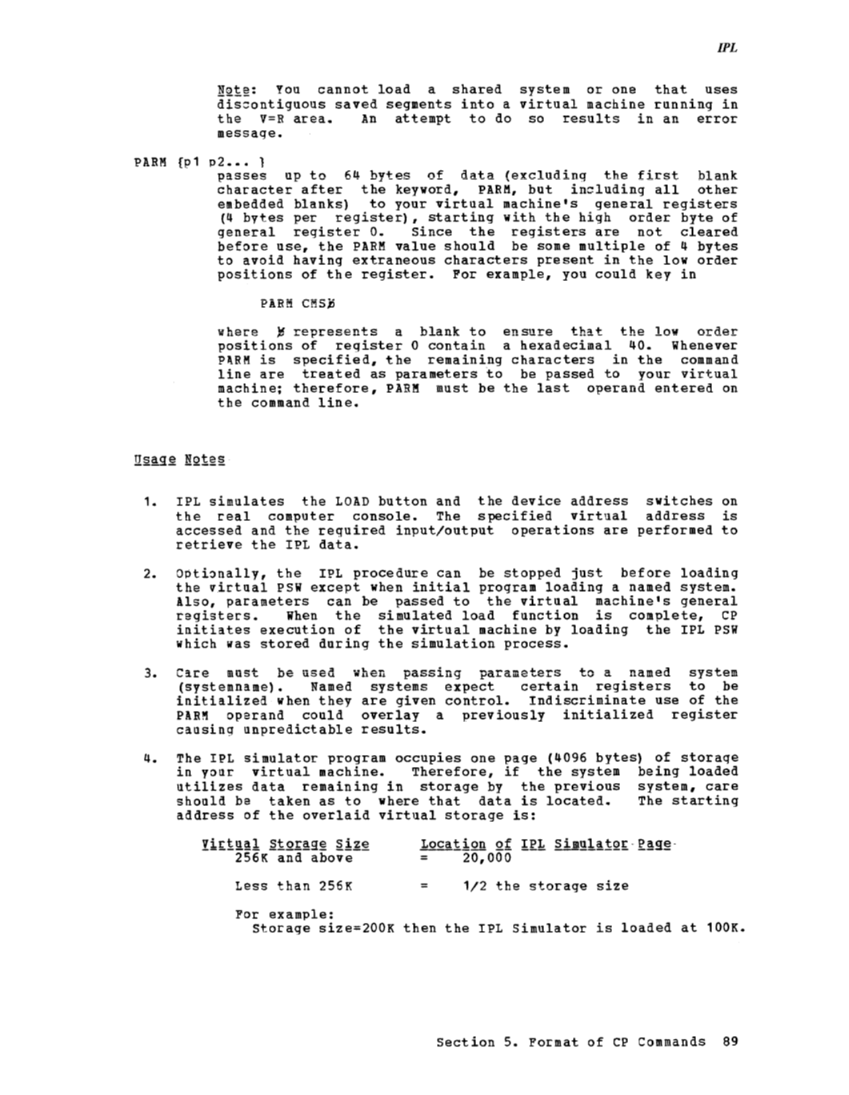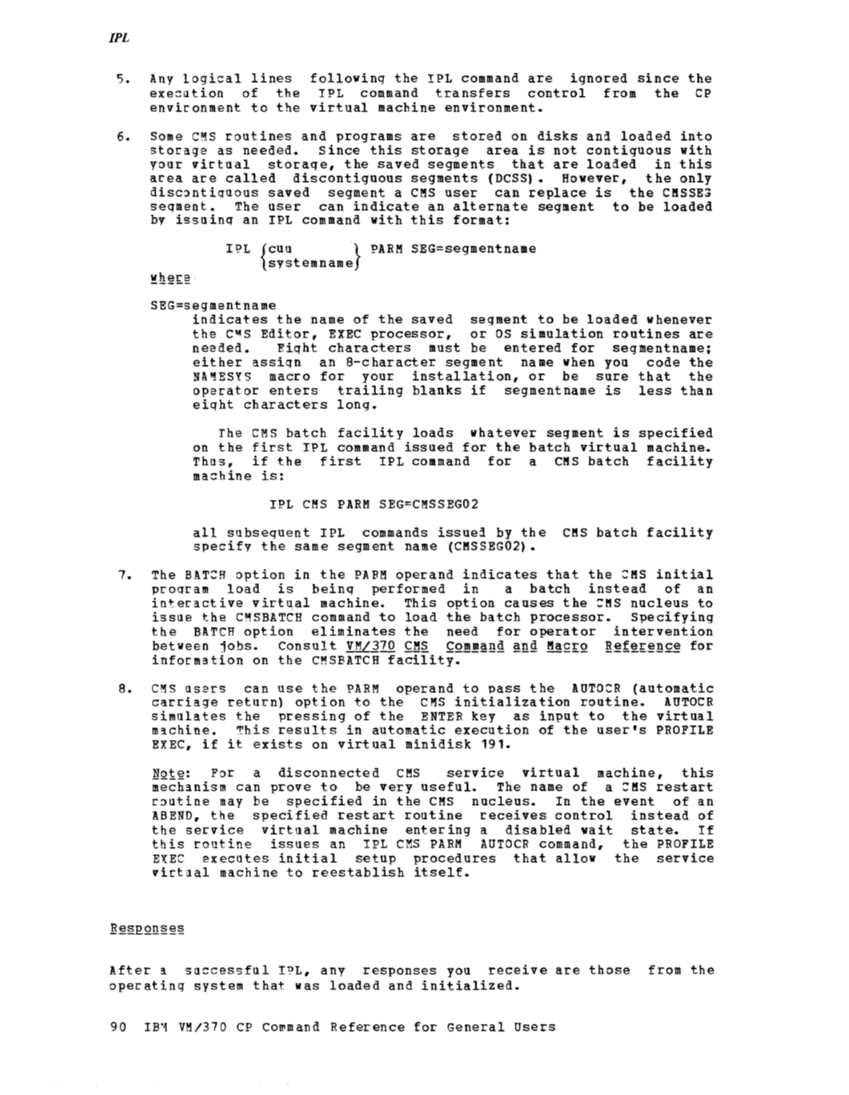IPL NQtg: You cannot load a shared system or one that uses disGontiguous saved segments into a virtual machine running in
theV=R area. An attempt to do so results in an error
message.PARM {p1 p2 ••• 1 passes up to 64 bytes of data (excluding the first blank
character after the keyword,PARM, but including all other
embedded blanks) to your virtual machine's general registers(4 bytes per register), starting with the high order byte of
general register o. since the registers are not cleared
before use, thePARM value should be some multiple of 4 bytes
to avoid having extraneous characters present in the low order
positions of the register. For example, you could key inPARr; eMSj) where loy. ornAr positions of register 0 contain a hexadecimal 40. Whenever
line are treated as parametersto be passed to your virtual
machine; therefore,PARK must be the last operand entered on
the command line.
1.IPL simulates the LOAD button and the device address switches on
thereal computer console. The specified virtual address is
accessed and the required input/output operations are performed to
retrieve theIPL data.
2.IPL procedure can be stopped just before loading
thevirtual PSW except when initial program loading a named system.
Also, parameters can be passed to the virtual machine's general
registers.When the simulated load function is complete, CP initiates execution of the virtual machine by loading the 1PL PSi which was stored during the simulation process.
3.Care must be used when passing parameters to a named system (systemname). Named systems expect certain registers to be
initialized when they are given control. Indiscriminate use of the
causing unpredictable results.4. The IPL simulator program occupies one page (4096 bytes) of storage in your virtual machine. Therefore, if the system being loaded
utilizes data remaining in storage by the previous system, care
should be taken as to where that data is located. The starting
address of the overlaid virtual storage is:
Less than 256K
For example:
= 1/2 the storage size
storagesize=200K then the IPL Simulator is loaded at 100K. Section 5. Format of CP Commands 89
the
message.
character after the keyword,
embedded blanks) to your virtual machine's general registers
general register o. since the registers are not cleared
before use, the
to avoid having extraneous characters present in the low order
positions of the register. For example, you could key in
line are treated as parameters
machine; therefore,
the command line.
1.
the
accessed and the required input/output operations are performed to
retrieve the
2.
the
Also, parameters can be passed to the virtual machine's general
registers.
3.
initialized when they are given control. Indiscriminate use of the
causing unpredictable results.
utilizes data remaining in storage by the previous system, care
should be taken as to where that data is located. The starting
address of the overlaid virtual storage is:
Less than 256K
For example:
= 1/2 the storage size
storage






















































































































































































































